Comprehensive analysis of IRF8-related genes and immune characteristics in lupus nephritis
- PMID: 39717551
- PMCID: PMC11663682
- DOI: 10.3389/fphar.2024.1468323
Comprehensive analysis of IRF8-related genes and immune characteristics in lupus nephritis
Abstract
Background: There are currently no reliable diagnostic biomarkers or treatments for lupus nephritis (LN), a complication of systemic lupus erythematosus. Objective: We aimed to explore gene networks and potential biomarkers for LN by analyzing the GSE32591 and GSE113342 datasets from the Gene Expression Omnibus database, focusing on IRF8 and IRF8-related genes.
Methods: We used differential expression analysis, functional enrichment, protein-protein interaction (PPI) network construction, and the CIBERSORT algorithm for immune infiltration assessment. To validate the expression levels of the IRF8 gene in the kidneys of lupus mice models, we used quantitative real-time PCR (qRT-PCR) and Western blotting (WB). A diagnostic classifier was built using the RandomForest method to evaluate the diagnostic potential of selected key genes. To bridge our findings with potential therapeutic implications, we used the drug-gene interaction database to predict drugs targeting the identified genes.
Results: Twenty co-differentially expressed genes (DEGs) were identified, with IRF8 exhibiting significant expression differences and potential as a biomarker. Functional enrichment analysis revealed pathways associated with immune response. Validation through qRT-PCR and WB confirmed that the IRF8 gene and its protein exhibited elevated expression levels in the kidneys of lupus mice compared to control groups. The diagnostic classifier revealed impressive accuracy in differentiating LN from control samples, achieving a notable area under the curve values across various datasets. Additionally, immune infiltration analysis indicated significant differences in the immune cell profiles between the LN and control groups.
Conclusion: IRF8 and its related genes show promise as biomarkers and therapeutic targets for LN. These findings contribute to a deeper understanding of the molecular mechanisms involved in LN and may support the development of precision medicine strategies for improved patient outcomes.
Keywords: IRF8; biomarkers; drug-gene interaction; immune infiltration; lupus nephritis.
Copyright © 2024 Yu, Zheng and Wang.
Conflict of interest statement
The authors declare that the research was conducted in the absence of any commercial or financial relationships that could be construed as a potential conflict of interest.
Figures
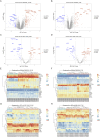

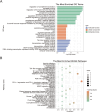
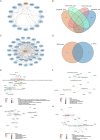
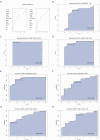
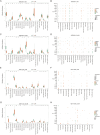


Similar articles
-
Immune cell infiltration characteristics and related core genes in lupus nephritis: results from bioinformatic analysis.BMC Immunol. 2019 Oct 21;20(1):37. doi: 10.1186/s12865-019-0316-x. BMC Immunol. 2019. PMID: 31638917 Free PMC article.
-
Machine learning-based identification of novel hub genes associated with oxidative stress in lupus nephritis: implications for diagnosis and therapeutic targets.Lupus Sci Med. 2024 Apr 18;11(1):e001126. doi: 10.1136/lupus-2023-001126. Lupus Sci Med. 2024. PMID: 38637124 Free PMC article.
-
Systematic identification of key extracellular proteins as the potential biomarkers in lupus nephritis.Front Immunol. 2022 Jul 28;13:915784. doi: 10.3389/fimmu.2022.915784. eCollection 2022. Front Immunol. 2022. PMID: 35967373 Free PMC article.
-
Macrophage Infiltration Correlated with IFI16, EGR1 and MX1 Expression in Renal Tubular Epithelial Cells Within Lupus Nephritis-Associated Tubulointerstitial Injury via Bioinformatics Analysis.J Inflamm Res. 2024 Dec 24;17:11469-11483. doi: 10.2147/JIR.S489087. eCollection 2024. J Inflamm Res. 2024. PMID: 39735896 Free PMC article.
-
Candidate MicroRNA Biomarkers in Lupus Nephritis: A Meta-analysis of Profiling Studies in Kidney, Blood and Urine Samples.Mol Diagn Ther. 2023 Mar;27(2):141-158. doi: 10.1007/s40291-022-00627-w. Epub 2022 Dec 15. Mol Diagn Ther. 2023. PMID: 36520403
References
LinkOut - more resources
Full Text Sources

